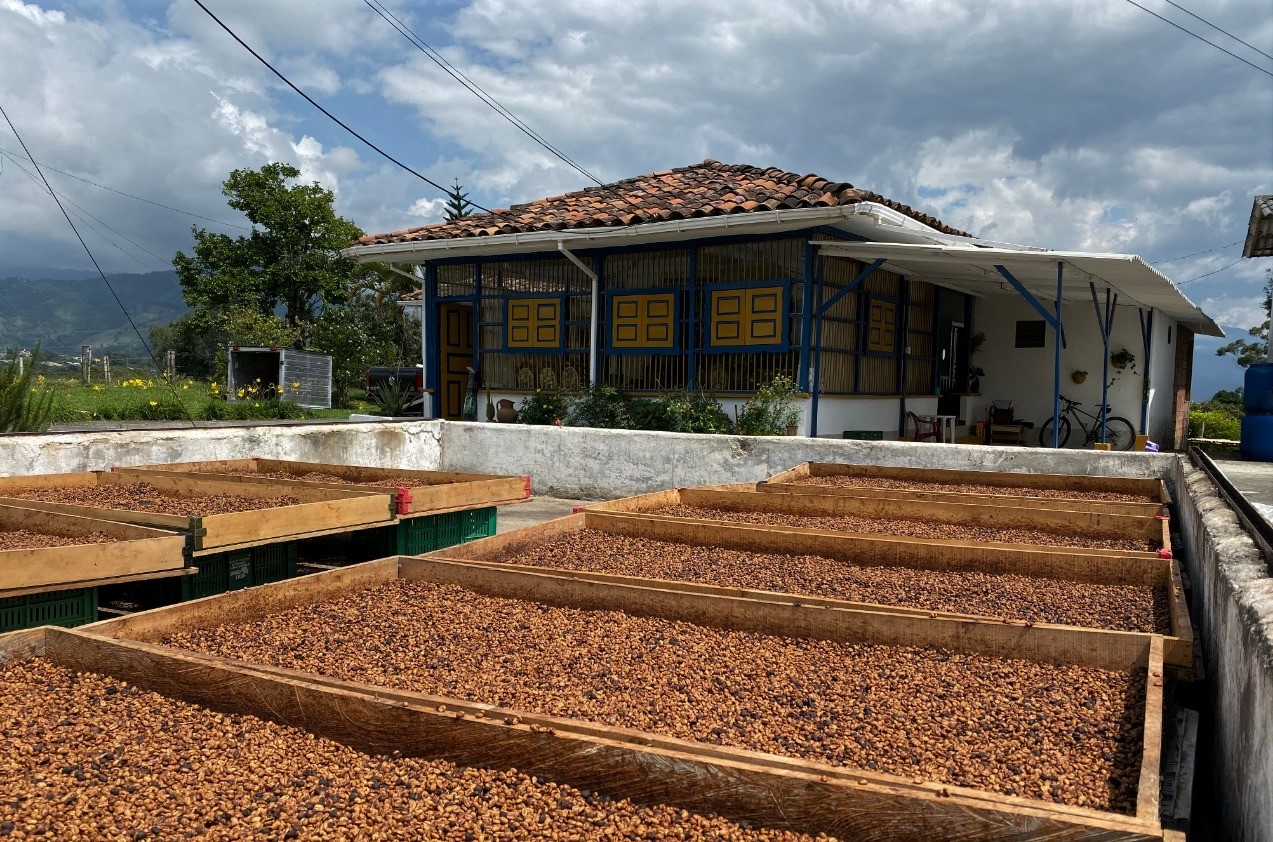Colombia El Alquimista Red Honey Pink Bourbon – *51013* – 25034 – 34.8 kg GrainPro Bags – SPOT RCWHSE
Position Spot
Bags 0
Warehouses Oakland
Flavor Profile Raspberry, lime, grape, caramel, clean
Please Note This coffee landed more than 8 months ago.
Out of stock
About this coffee
Grower
Edwin Noreña | Finca Campo Hermoso
Altitude
1600 masl
Variety
Pink Bourbon
Soil
Clay minerals
Region
Circasia Municipality, Quindío Department, Colombia
Process
Anaerobic cherry fermentation, Honey process and dried on raised beds
Harvest
April - June | September- January
Certification
Conventional
Coffee Background
For a naturally gifted department such as Quindío, precious few coffees produced here seem to make it out into the world. Not that there is much to begin with compared to Colombia’s other hulking coffee-producing departments. Quindío is Colombia’s second-smallest department by size, making up only about 0.2% of the national territory. Its location, however, right on the central cordillera of Colombia’s vast Andes divide, and centrally between the country’s largest and most influential cities (Bogotá, Medellín, and Cali), give it a high volume of tourist traffic, coffee milling and transit industry, airline commuters, and idyllic getaways in the form of brightly painted mountain towns, natural reserves, and high elevation tropical landscapes throughout. Almost the entire department is mountainous, its lowest elevations still over 1000 meters, and is dense with coffee plantations, from the small to the large and ambitious.
Finca Campo Hermoso is a 15-hectare farm outside of Circasia, only a few kilometers north of Quindío’s capital city Armenia. It’s owner, Edwin Noreña, is an agroindustrial engineer by trade with graduate-level studies in biotechnology. Edwin is a well-connected and highly aspirational coffee producer who focuses on cultivating carefully curated varieties paired with precise processing methods, designed to express the most surprising, memorable, and delicious coffees possible within his resources. Finca Campo Hermoso concentrates on growing cultivars far apart from the nationally-distributed hybrids of Castillo or Colombia, or the traditional Caturra. Instead the farm has in production pink bourbon, yellow bourbon, bourbon sidra, gesha, and Cenicafe 1, a rarer resistant hybrid developed by Cenicafé, Colombia’s national coffee research institute. The resulting coffees are marketed under “El Alquimista”, Edwin’s personal brand for his microlots, which have featured in barista competitions on the shelves of choosy roasters around the world.
The pink bourbon variety is a mutation of red bourbon, simply known as “bourbon”, a centuries-old heirloom that was once a staple variety for most of Latin America. In the past 15 years, however, mainly due to disease and climate change, bourbon has become a minority variety everywhere in Latin America save for Brazil. As a result, the variety has become harder to find and typically only produced in microlot quantities. With bourbon at such a scarcity, you can imagine the value of a lot like this: not only is it a pure bourbon, but it is a regionally specific lineage of the variety brought to market only recently. The unique pink pigmentation of the fruit, and what many agree is a distinctly delicious personality in the cup, has recently been propagated and marketed within southern Huila, not far from Quindío, but almost nowhere else to date.
Edwin’s “red honey” process uses a combination of anaerobic cherry fermentation, mucilage fermentation, and a traditional honey process to achieve the final profile. Cherry is picked and sorted for processing like all cultivars on Campo Hermoso—at peak maturation, manually picked, and floated in water to sort by density. Once picked, the cherry undergoes a 56-hour anaerobic fermentation in a low-oxygen environment, a technique that allows the fruit pulp to break down and sugars to peak, often imparting a tangy snap to the acids of the final cup. After anaerobic fermentation is complete, the coffee is depulped and fermented dry for another 48 hours, and finally set out directly to dry on raised beds in the sun.




